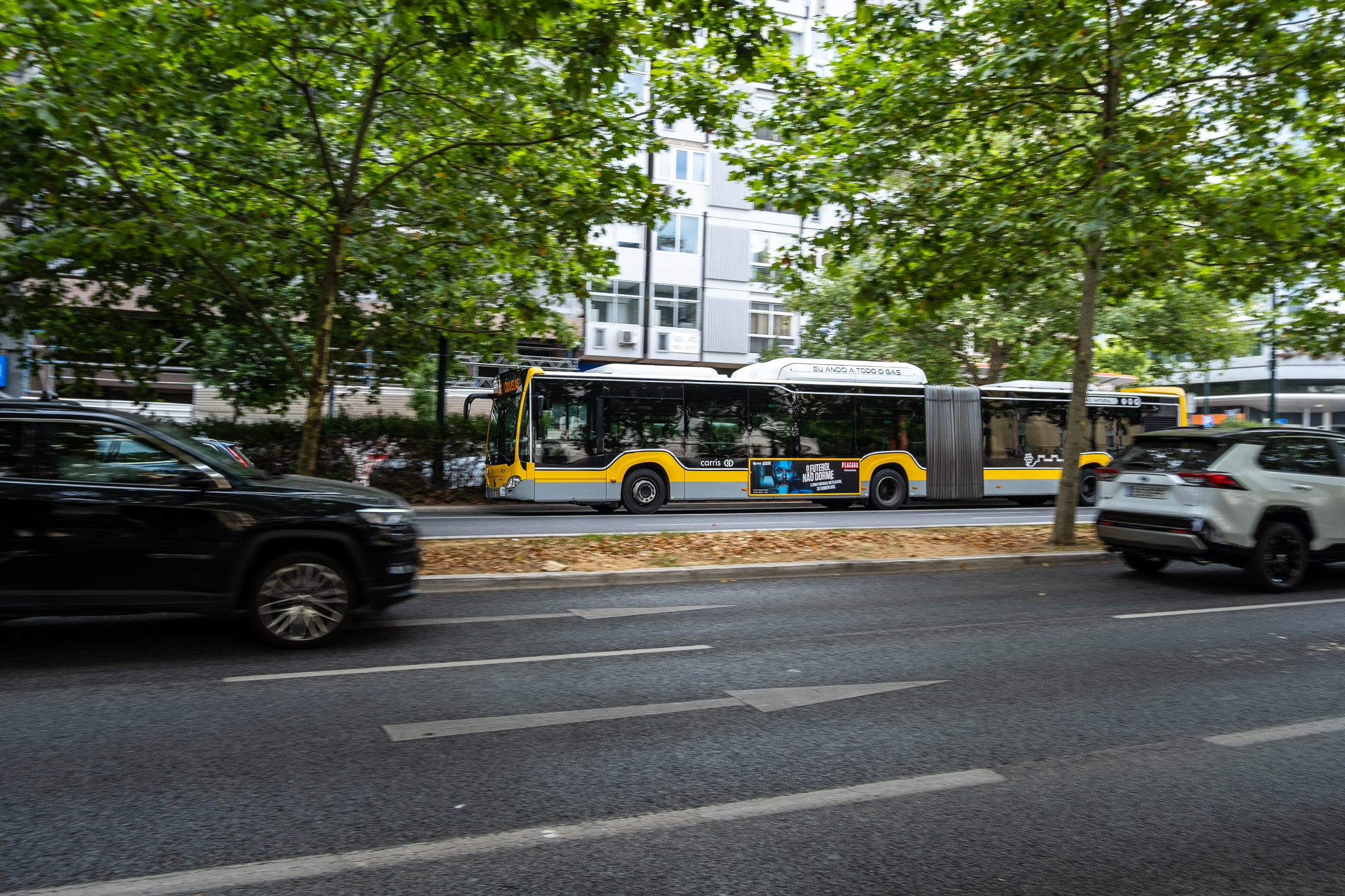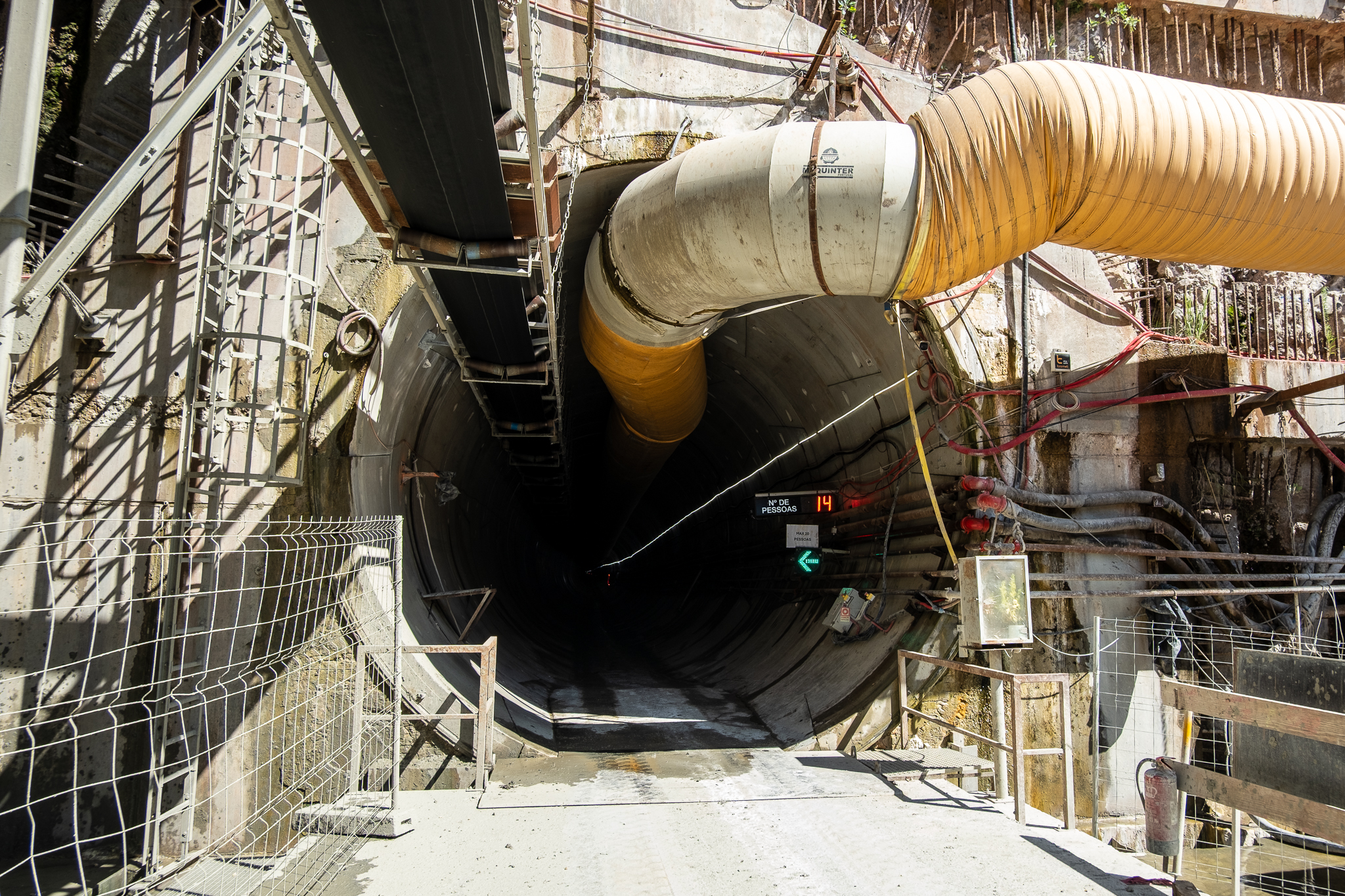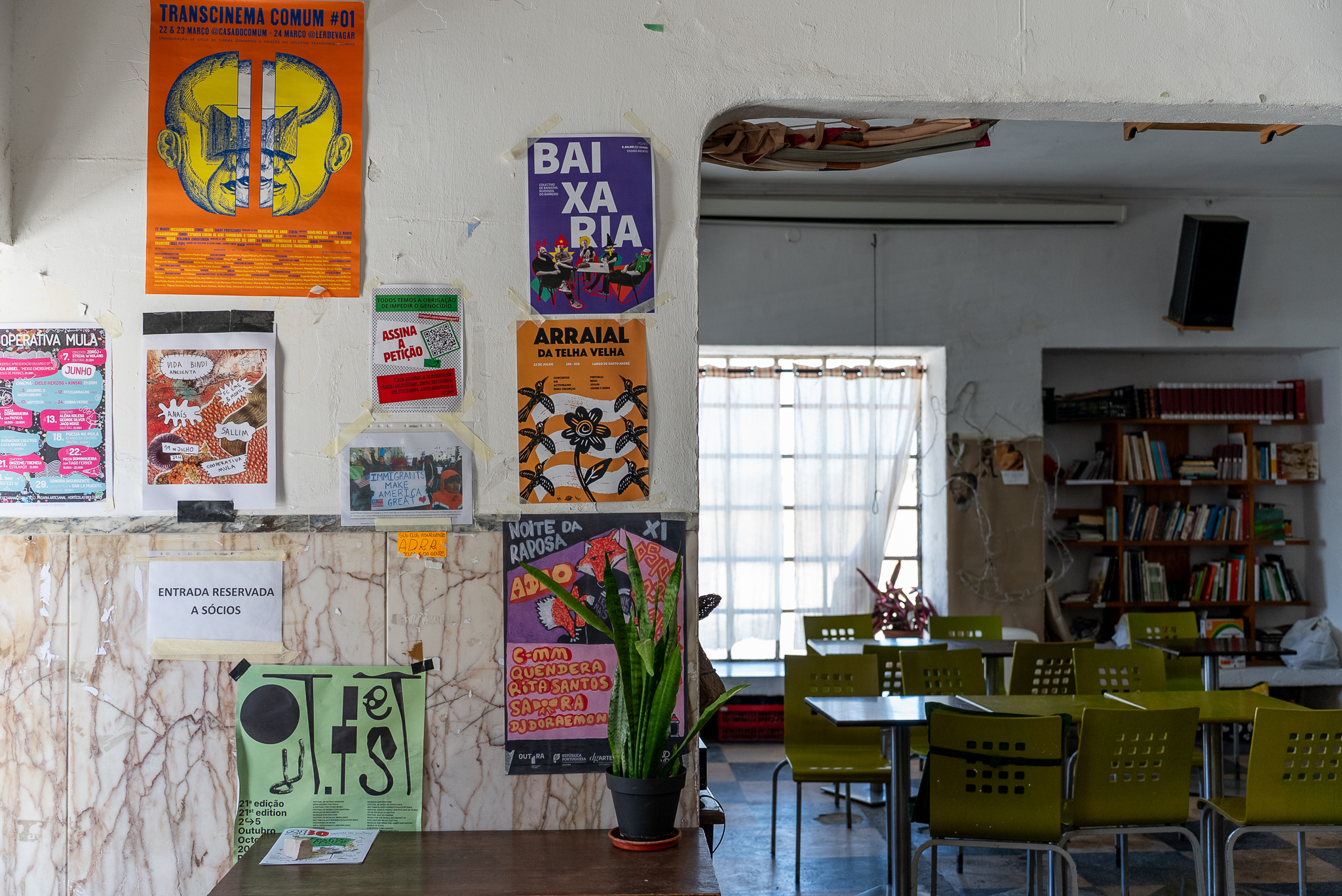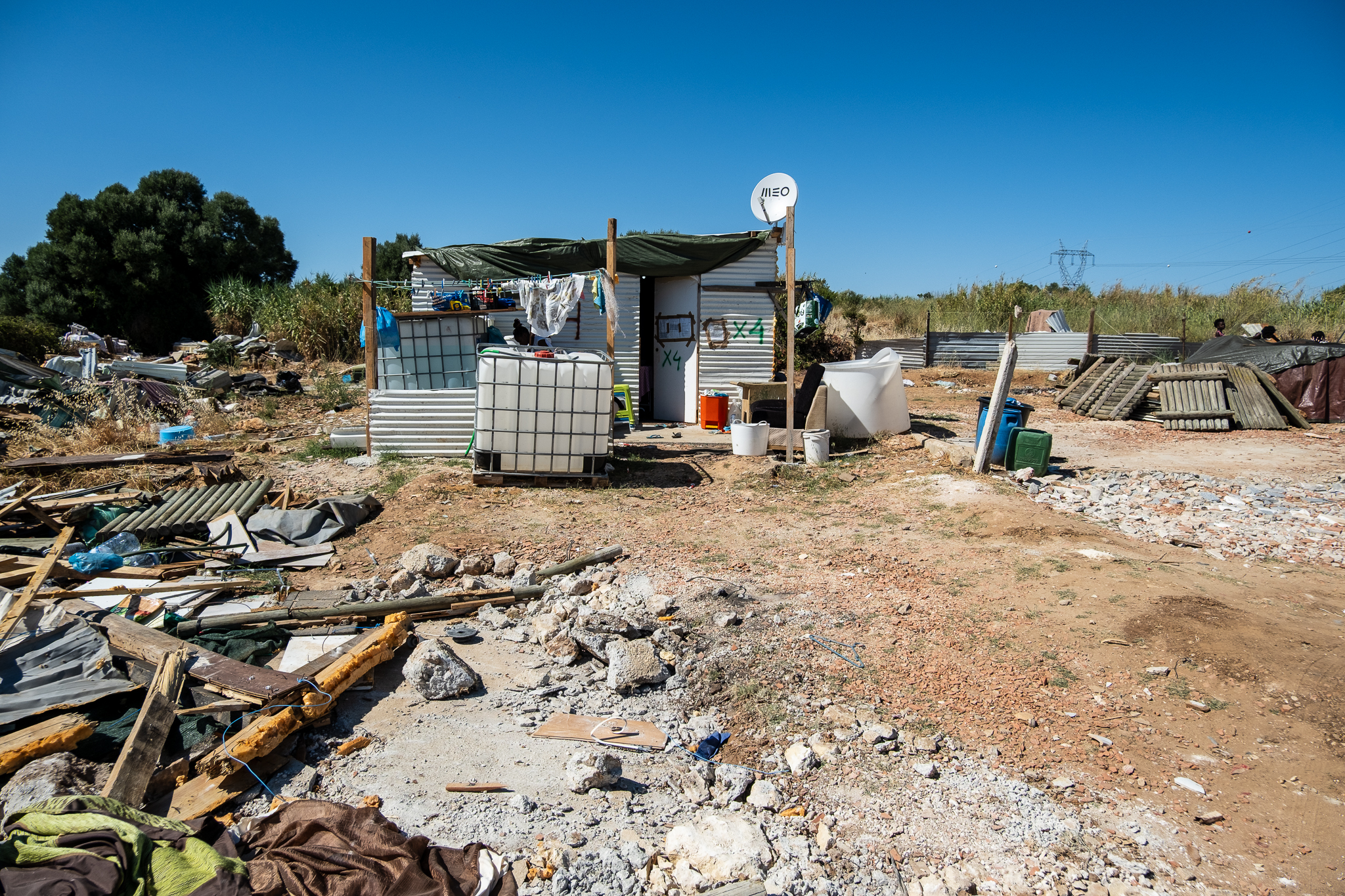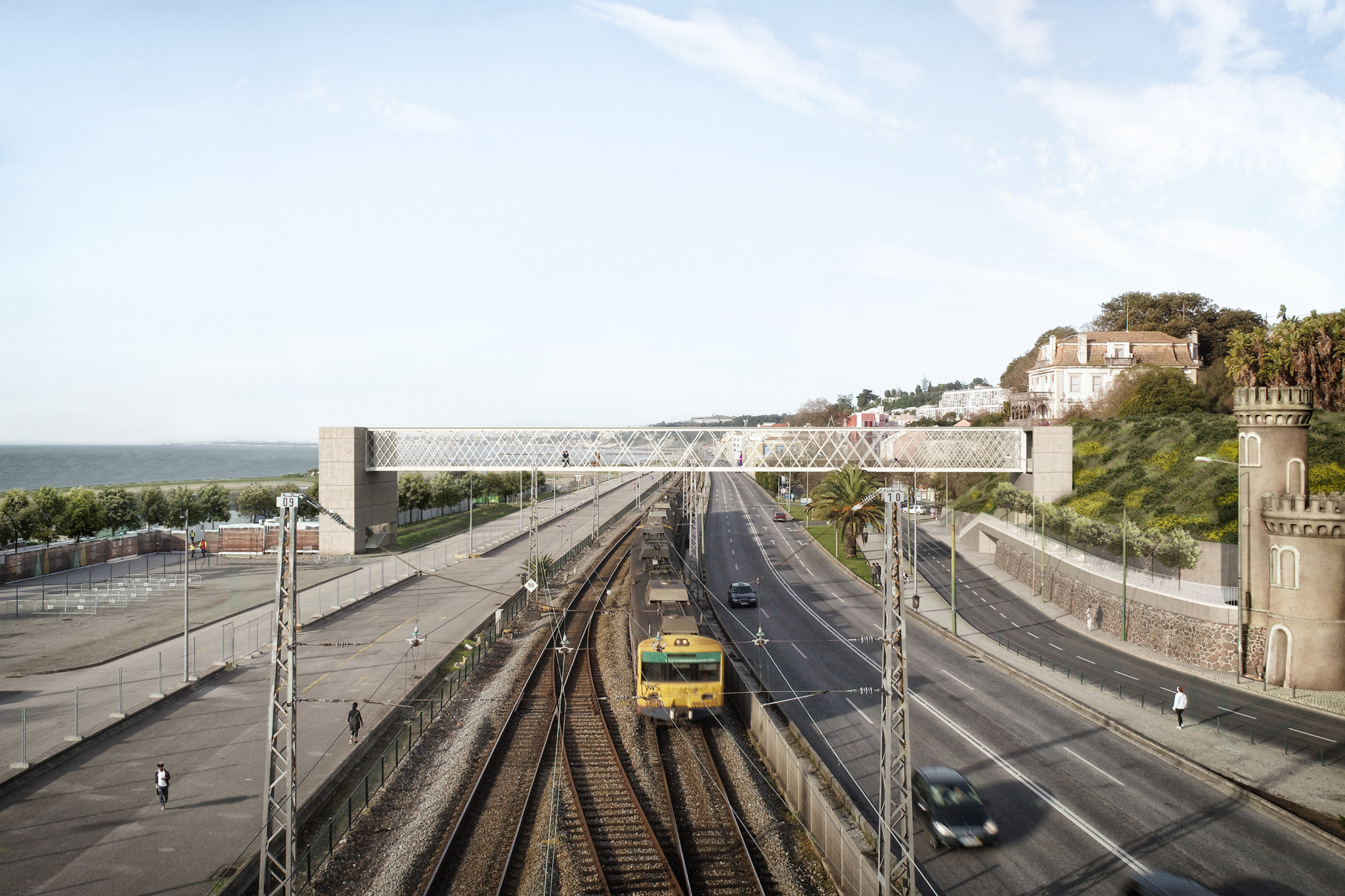What is the future of Avenida Almirante Reis and its cycle path? Three sessions held between Friday and Monday, with associations, traders and people in general, kicked off a process that Carlos Moedas wants to be participatory. João Castro, a landscape architect and advisor to the President, led the meetings with the support of...

João Castro is a landscape architect. The pedestrianized Duque d'Ávila had his hand in it, as did the requalification of the public space and afforestation of Avenida João XXI and the garden at Quinta das Conchas - where there was even a participatory process. He was also the author of the first kilometers of cycle path in the city "when there were still no customers"worked with Costa and Medina; and is now on the team of the current Mayor of Lisbon, Carlos Moedas, leading the requalification of Almirante Reis. In one public session which took place this Monday evening at the Mercado das Culturas, in ArroiosThe event, organized by the Parish Council, heard the people present express their ideas and wishes for this avenue.
There are 4 or 5 ideas for Almirante Reis still under study. They will be presented soon
For this session, João Castro did not bring exhaustive information on proposals for Almirante Reis, despite having "three or four solutions that were presented to us, and a sketch". One of these proposals, he explained, involves diverting the cycle path partially to side streets, namely Rua de Arroios (one-way downhill) and Rua António Pedro (one-way uphill). Another could involve the implementation of four lanes, two in each direction, and the cycle track, "compromising the grove" which now exists in the central corridor and "part of the tours". Everything is still open. The Lisbon City Council wants the redevelopment of Almirante Reis to be a participatory process. an intervention on Avenida "two-stroke"as Moedas had already said in interviews and as João Castro reinforced: a first, short-term solution to the "pop-up track problem" and another in the long term to upgrade the avenue from top to bottom in its different layers. It is hoped that the "guidelines for the provisional version should be the same as those for the future version".
"Nit's difficult to complete a rehabilitation of Almirante Reis in one municipal term" - just to do the project and prepare the documentation to launch a "international call for tenders" would be "three years"followed by "a year and a half for implementation". João Castro is in favor of redeveloping the axis in one go so that there are no discontinuities like there are on Avenida da República, where redevelopment has stopped at Campo Pequeno and the northern sector is left for later.
The public participation process is the first stage. This Monday's session was the third to be held, after a first one on the previous Friday, in which associations were heard and "living voices" from the parish invited in person and one on Saturday with traders - "unfortunately not many turned up". João Castro said that he had taken note of the different participations - on Monday, each person was entitled to three minutes of speech and all those registered managed to speak, with the session (which started at 9 pm) ending after 1 am; and that now they will "test" the ideas shared by people in the solutions they already have "to make them better".
A new session has been pre-scheduled for "in two or three weeks" already submitting proposals and also data on the current situation on Almirante Reis - data not only on the cycle path - where there are sometimes more than 1,200 bicycle crossings a day, according to EMEL's counters - but also on car traffic, intersections, noise and air pollution, or the avenue's green structure. João Castro guaranteed that in thinking about the future of Almirante Reis, the different layers will be taken into account, including bicycles, pedestrians, cars, loading and unloading and public transport. "[they will] sacrifice everyone a little so that the future profile of the avenue is a compromise, but doesn't exclude anyone". "If we discuss together and make this process participatory, you'll see yourselves in the images I'm going to present" said João Castro. "A good solution emerges from the conflict of all the proposals."he remarked.
"The emergency corridor has never been as good as it is now," said Moedas' advisor
The architect and advisor to Moedas recognized that the cycle path pop-up - even though it was done without the involvement of the people - "can be useful" for this fundamental discussion: "your analysis allows us to plan a better track". João Castro said he had been on the ground observing, making videos and analyzing what is happening on that axis, which he sees as a "structuring axis" of the city, which has a higher population density than similar routes such as Avenida de Ceuta/Vale de Alcântara and Avenida da Liberdade. He was surprised by the number of users of the cycle path, which goes beyond cyclists - also families with baby carriages or strollers. trolleys loading and unloading. He said "the emergency corridor has never been as good as it is now" and that, through the cycle lane, ambulances are able to "do the whole canal and access the exit to São José without stopping and in relative safety"instead of being blocked by cars - statements that contradict Moedas' public narrative that the cycle lane harms the emergency. The architect also acknowledged that Almirante Reis "it's fantastic for cyclists because of its constant gradient"He also spoke of the importance of direct routes for cycling - for example, he commented that the Almirante Reis cycle path requires turns in both Alameda and Martim Moniz).

However, the coordinator of the Almirante Reis redevelopment process, which is being handled by the mayor's office, said there is a "environmental problem" with the bike lane we need "minimize" with the short-term intervention, referring to an increase in air pollution and noise on the avenue. He won't have concrete data until the next session, but he said that "pollution is higher at some points because the bike lane has been strangled" traffic. "We only have two points" pollution measurement on Avenida e "we're extrapolating" for other sectors of the axis. In this regard, the architect admitted that one solution could be to tinker with the traffic lights in order to guarantee a "continuous green"This will allow traffic to flow, reducing the constant stoppages and thus reducing the levels of noise and air pollution on the avenue. Another point that deserves attention is the transfer of traffic, namely to the parallel Rua António Pedro, "where there has been almost twice as much traffic due to the bike lane on Almirante Reis". "I was surprised too."
João Castro, a landscape architect with 30 years in the Lisbon City Council and advisor to Carlos Moedas, listed his ideas as he responded to each of the public's interventions. Around a hundred people took part in this session, which had been called the day before on the social networks of the Arroios Parish Council –"Avenida Almirante Reis is going to change. We're counting on you! Find out what's going to happen first"read in the shared poster. Beyond the debate itself, some of the participants criticized the short notice with which the meeting was announced, the fact that it wasn't communicated in the council's street media or that it wasn't also shared by Lisbon City Council. There were also those who had signed up thinking that Almirante Reis as a whole would be talked about more than its cycle path, and at least two people who had hoped to see a concrete presentation on the future of the avenue. Among those present were party representatives from PAN, PS and PCP, who, in turn, regretted not having been invited to this participatory process or having heard about it in advance.
"The bike lane is only a problem because it was a political banner in the elections"
Most of the speakers were in favor of the cycle path and use it in their daily lives. This is the case of Fernando Oliveira, who is over 80 years old and who said "being a daily user of the bike path on your walks"saying "be the most direct route" at the access to the river and regretting that the road did not continue towards Penha de França via Rua Morais Soares. Already a local resident said he didn't use a bicycle but supported the bike lane "for quality of life" that gives you. "I'd like to have more trees and more gardens, including one in Martim Moniz" and asked for the missing trees in Largo do Intendente to be replanted. He also spoke about the lighting, asking for it to be de "warm yellow light" because "gives more comfort" e "invites people to stay longer in the public space". Another resident, who recently moved to Almirante Reis, said that he took two factors into consideration when moving: "the cycle path and the future garden of Caracol da Penha". "I can now cycle with my 7-year-old son to his school in Campo Grande"He called for crosswalks with longer crossing times, continuous green traffic lights, not for cars but for bicycles and pedestrians, and covered parking for bicycles.
"The bike lane is probably the only thing that isn't a problem for me on Almirante Reis"another stakeholder pointed out, corroborating a position that other people also put forward. "The bike lane is only a problem because it was a political banner in the elections"said another person. A businesswoman "for over 45 years" on the avenue said that "we can't have two tempos, at the risk of damaging the avenue even more"He called for the promised upgrading of Almirante Reis to go ahead now. "It's an avenue that has never been treated as such"said one resident "30 years ago" of the area. "Demoting Almirante Reis to a bike lane is something that is incomprehensible in the history of Lisbon"he said. "Almirante Reis is talked about as a way in and out of Lisbon, but I ask you: is Lisbon downtown?"
The downturn was, moreover, a elephant in the room throughout the session. The ABC ZER, announced in January 2020 by then Mayor Fernando Medina, promised that year to create a car-restricted zone, which would take traffic pressure off Almirante Reis. The current city council has never committed to a timetable for the ZER or the resumption of the project, despite recognizing its value, and the issue ended up coming up in debate. "I'd like to know if [the redevelopment of Almirante Reis] is a plan for the future, for the ZER and for climate commitments, or if it's a look at the past and the traffic of the 1990s?", questioned one participant, concerned about the possibility of Almirante Reis once again having four lanes of traffic. "I don't know why they start at Almirante Reis and not downtown"reinforced someone else. At one point, the room almost shouted in unison for the ZER to be resumed. João Castro didn't have a direct answer to this problem, although he agreed with an integrated vision for the city and for a downtown with less traffic - he said it was necessary to have a good range of public transport in the historic area and brought up the subject of LIOS.

A citizen brought a loudspeaker to show the noise of Almirante Reis and the differences felt between the period of confinement and deconfinement. “It's very unpleasant to walk or cycle on Almirante Reis and other streets in the city"he said, referring to the Lisbon City Council's open data. "I don't know how we can talk about increasing traffic lanes if car noise [with a single lane in each direction and the cycle lane] is already in the red." And he left an idea: the downhill side of the avenue should be for streetcars and soft modes and the uphill side for general car traffic. João Castro said he was sensitive to the problem of noise and that we should have "a positive plan" which "reduce the source, not the impact" and baptized "Plan of Silence".
Another person commented that "Almirante Reis never had two lanes because the right-hand lane was for parking"He was referring to the scourge of loading and unloading and fast stops in the middle of the road that plagued that axis before the bike lane. "I used to run away from Almirante Reis" and took parallel alternatives when I drove to work in the airport area. "I agree with you that Almirante Reis never had two lanes", recognized João Castro, and, "if we put two lanes back in, we'll have to create a system" to avoid the second queue. Some participants said that the bike lane had calmed traffic and reduced the speeds practiced there, especially at night and at times when there was no traffic. "I've been riding on Almirante Reis for many years and always looked twice when it was night time," commented one cyclist. Another, with experience of riding "more than 30 years" in different cities, testified that he used to run away from Almirante Reis because he didn't feel safe. This should be "a structuring road for people"and not for cars, he said. Another Almirante Reis user confessed that the bike lane and GIRA made him switch from the metro to his bike. "I've come to use this area, to be in your streets and to spend my money here"instead of crossing the avenue underground. "What happened here was a giant traffic calming device"he added.
"This is not public participation. It's called political strategy"
During the session, João Castro and the participants discussed other ideas. Moving the trees from the central corridor - where they are restricted by the Metro tunnel and cannot grow any more - to the sidewalks, giving them shade, is one of the possibilities on the table. In August, Almirante Reis is 5ºC hotter than the tree-lined Rua Pascoal de Melo, said the architect. Soon, the possibility of changing the subway exits, making them oblique as in Praça do Chile, was admitted. There was also talk of the importance of having a cycling network in Lisbon and the fact that Almirante Reis is still an island, with no connections via Pascoal de Melo (to Estefânia) or Morais Soares (to Penha de França). "If a person wants to make the transition from the car to the bike lane"The bike lane on Almirante Reis alone may not satisfy their needs, said one person. One citizen pointed out that, rather than discussing Almirante Reis, it is necessary to clarify what the city's vision for mobility is. "The vision is essential for everything else. We have to share the vision because if we don't, the solutions we propose will be conflicting."
This Monday's session to discuss the Avenida Almirante Reis (or its cycle path?) ended late, after the scheduled time - midnight. Among the audience, there was some suspicion as to whether this was really a participatory process and whether there was a real desire to listen to the people. The short notice of the meeting, on a long Carnival weekend, and the lack of information on official channels from both the Parish Council and the City Council generated some suspicion. What is certain is that for more than four hours - almost five - João Castro patiently listened to the different people who signed up to speak. "I'm here generously to help my president and my city"he said. But not everyone present was convinced. "This is not public participation. It's called political strategy"said a speaker in the middle of the session "super in love with the city" where he wasn't born and where he lives "recently". He received a lot of applause from the audience, which was still very composed at the time. We'll see what happens next and how people's opinions will be integrated.

